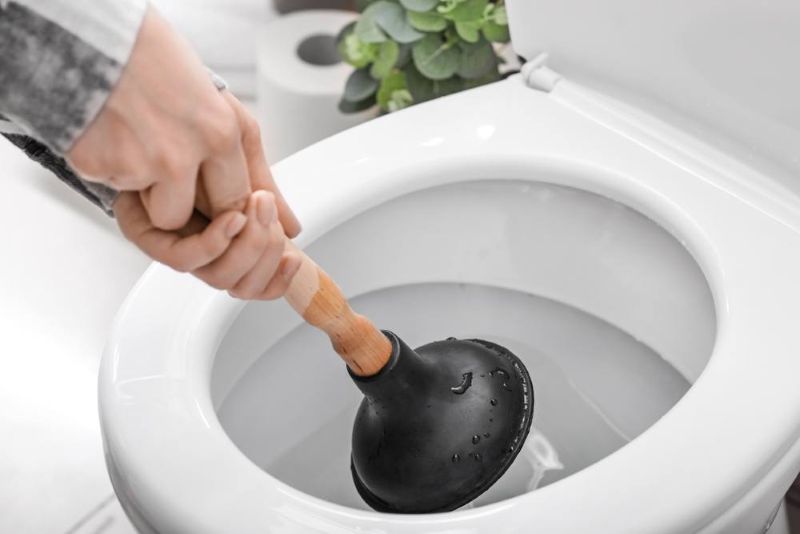How to Unblock a Blocked Toilet or Sink Without Calling a Plumber
Dealing with a blocked toilet or sink is one of those household problems that seems to happen at the worst possible time. You’re getting ready for work, entertaining guests, or finishing up dinner, and suddenly the water won’t go down. A clogged drain doesn’t just slow things down—it can cause stress, bad smells, and even water damage if left untreated.
The good news is that not every blockage means you need to call in a professional straight away. Many small clogs can be sorted with simple, safe methods that don’t require expensive tools. By learning a few DIY techniques, you can often save yourself time, money, and the hassle of waiting around for a plumber.
At Drainage & Plumbing LTD, we’ve seen it all—from children’s toys flushed down the loo, to sinks completely solid with cooking fat. And while we’re always ready to help, we also know that homeowners like to try fixing small problems themselves before reaching out. That’s why we’ve put together this two-part guide:
- Part 1 covers the common causes of blockages, essential safety tips, and practical DIY methods to clear a clogged toilet.
- Part 2 takes you through ways to clear a blocked kitchen sink, plus preventative steps to keep your drains running smoothly, and when to stop trying and call the experts.
Let’s dive in.
Part 1: Understanding Toilet Blockages and How to Clear Them
Why Toilets Get Blocked
Toilets are built to flush away waste and toilet paper—nothing more. The moment other items or too much paper go down, you’re asking for trouble. Here are the main offenders we see on callouts:
- Excessive toilet paper – Thick, quilted paper or large amounts at once don’t break down easily.
- “Flushable” wipes – Despite the label, these don’t disintegrate in water like toilet paper does.
- Sanitary products – Tampons and pads expand in water and can block pipes within minutes.
- Cotton products – Cotton buds, balls, or swabs clump together and snag on pipe walls.
- Hair and dental floss – These wrap around other debris, creating stubborn tangles.
- Foreign objects – Kids’ toys, cat litter, soap bars—you’d be amazed at what ends up down toilets.
Understanding the cause helps you decide the best way to clear the blockage. A wad of paper might respond to plunging, while something solid may require a drain snake or professional help.
Safety First
Before you start any DIY unblocking, always think about safety. Here’s what to keep in mind:
- Wear rubber gloves to protect your hands.
- Have old towels nearby in case of spills or overflow.
- Don’t flush repeatedly if the bowl is full—it will only make a mess.
- If you use any cleaning agents, make sure the room is well ventilated.
- Most importantly, know when to stop. If something feels stuck or your attempts don’t help, forcing it could damage the pipe.
DIY Methods to Unblock a Toilet
1. Initial Checks
Before plunging, check if other drains in your house are affected. If sinks, showers, and toilets are all slow, the problem may be in the main sewer line—not just the toilet. That usually requires professional help.
2. Plunger Method
A flange plunger (with an extended rubber flap) works best on toilets.
- Place it firmly over the drain opening, making sure it forms a good seal.
- Push down gently at first to release trapped air, then plunge vigorously 15–20 times.
- After a few tries, remove the plunger and check if the water drains.
This is usually enough for clogs made of paper and waste.
3. Baking Soda and Vinegar
This natural method works for softer blockages.
- Scoop out excess water until the bowl is half full.
- Add 1 cup of baking soda followed by 2 cups of vinegar.
- The fizzing action helps break down debris.
- Leave for at least 30 minutes, then try flushing.
4. Toilet Auger
If plunging doesn’t work, a toilet auger (also called a closet auger) can reach deeper.
- Insert the flexible end into the drain and turn the handle to push it through.
- If you feel resistance, keep turning to break the blockage or hook it.
- Slowly pull the auger out, then test with a flush.
5. Dish Soap and Hot Water
A simple trick for softer clogs.
- Pour about half a cup of dish soap into the bowl.
- Follow with a bucket of hot (not boiling) water.
- Wait 20–30 minutes, then flush.
The soap lubricates the pipes, while hot water helps break down waste.
💡 Tip: If you’ve tried two or three of these methods without success, stop. A hidden or deeper problem could be the cause, and forcing things further risks making it worse.
Part 2: Kitchen Sink Blockages and Preventing Future Problems
Why Kitchen Sinks Get Blocked
Unlike toilets, kitchen sinks deal with food scraps, grease, and soap on a daily basis. Over time, these build up and create clogs. The main culprits include:
- Grease and oil – The number one offender. Hot grease poured down the drain cools and hardens, coating the inside of pipes.
- Food scraps – Rice, pasta, coffee grounds, and vegetable peelings can all expand and collect.
- Soap scum – Mixes with grease and narrows pipe openings.
- Foreign items – Spoons, bottle caps, or sponges falling in cause sudden blockages.
DIY Methods to Unblock a Sink
1. Boiling Water
A simple first step.
- Remove standing water.
- Pour a kettle of boiling water slowly down the drain.
- Wait a few minutes, then run the hot tap.
This works best for minor grease build-ups.
2. Baking Soda and Vinegar
Great for greasy or organic clogs.
- Pour 1 cup of baking soda followed by 1 cup of vinegar.
- Cover the drain to trap the fizzing reaction.
- After 30 minutes (or overnight for tough clogs), flush with hot water.
3. Plunger
- Remove the sink strainer.
- If your sink has an overflow hole, plug it with a wet rag.
- Fill the sink with enough water to cover the plunger cup.
- Plunge up and down about 15 times, then check if water drains.
4. Clean the P-Trap
The U-shaped pipe under the sink often collects debris.
- Place a bucket underneath.
- Unscrew the nuts and remove the trap.
- Clear out any gunk, rinse, then reattach securely.
5. Drain Snake
For deeper clogs, use a small hand-held snake.
- Feed it into the pipe, turning the handle as you go.
- When you feel resistance, crank to break up or grab the clog.
- Slowly pull it back, then flush with hot water.
Preventing Future Blockages
The best fix is prevention. Here are some habits that make a big difference:
- Don’t pour grease down the sink—let it solidify and bin it instead.
- Use sink strainers to catch food scraps and hair.
- Flush drains with hot water after cooking.
- Do monthly maintenance with baking soda, vinegar, and hot water.
- Avoid chemical drain cleaners—they can corrode pipes and make problems worse.
When to Call a Professional
DIY methods are great for small blockages. But if the clog keeps coming back, or if multiple drains are affected, it’s a sign of a bigger issue—like tree roots, collapsed pipes, or a blocked main sewer.
That’s where Drainage & Plumbing LTD comes in. We provide 24/7 drainage and plumbing services across South East England, covering Croydon, Sutton, Bromley, Epsom, Wimbledon, Reigate, Redhill, and beyond. Our team uses professional tools like CCTV drain cameras, high-pressure jetting, and advanced leak detection to solve problems properly—without the guesswork.
Why Homeowners Trust Us
- ✅ 24/7 emergency callouts—whenever you need us.
- ✅ Fast response—usually within the hour.
- ✅ Local engineers—covering all of South East England.
- ✅ Certified experts—trained, insured, and experienced.
- ✅ Honest pricing—no hidden fees.
- ✅ Thousands of successful jobs completed.
Drain Cleaning South East: Affordable Solutions
Final Thoughts
Blocked toilets and sinks are frustrating, but with the right approach, many can be fixed at home in under an hour. By understanding what causes clogs and using safe DIY methods, you’ll save yourself money and stress. However, it’s equally important to know your limits—if the blockage is stubborn, recurring, or affecting multiple drains, that’s your signal to stop and call in the professionals.
At Drainage & Plumbing LTD, we’re ready 24/7 to help homeowners across South East England keep their homes safe, dry, and comfortable. Whether it’s a midnight toilet emergency or a kitchen sink that won’t budge, we’ve got the tools and expertise to sort it.
📧 Email: support@drainage-plumbing.co.uk
📱 Phone: 07771 200075
🌐 Website: drainage-plumbing.co.uk



One Response